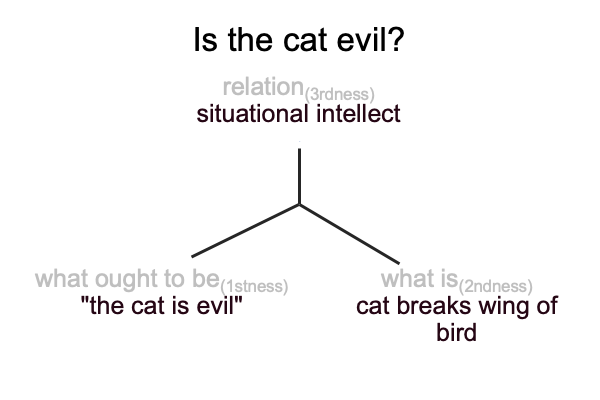0023 What is a judgment2c?
A judgment2c is a triadic relation composed of three elements: relation, what is and what ought to be.
0024 Here is a picture of the observer’s utterance, spoken without reflection.

0025 In this, a cat stands for ‘something’ evil, even though God created the cat in goodness. Somehow, the observer plucks a symbol of the cat from the tree of the knowledge of good and evil, then declares that symbol to be relevant, without a second thought. That symbol describes a person, who breaks the wings of another person.
Surely, such a person is evil.
0026 The observer’s declaration has all the ingredients that go into a judgment.
However, it comes out as blather2a, a subjective1a event, pretending to be intersubjective2b, and therefore carries the weight of judgment2c.
The party animal anticipates that the graduate student will agree with the statement.
If “he” does not, then “she” will look foolish.
No one wants that.
0027 Is there a privation here?
The observer’s impression2b claims to be true, as opposed to false, or maybe, deceptive. It2b appears to be sensible. It2bcoheres with the structure of judgment. Yet, it2b really is just a way of saying that people can be like cats. It2b is an object2b that does not express the fullness of its intersubjective potential because it makes sense1b. More or less. No judgment is really needed. Only agreement. Humans are cats.
